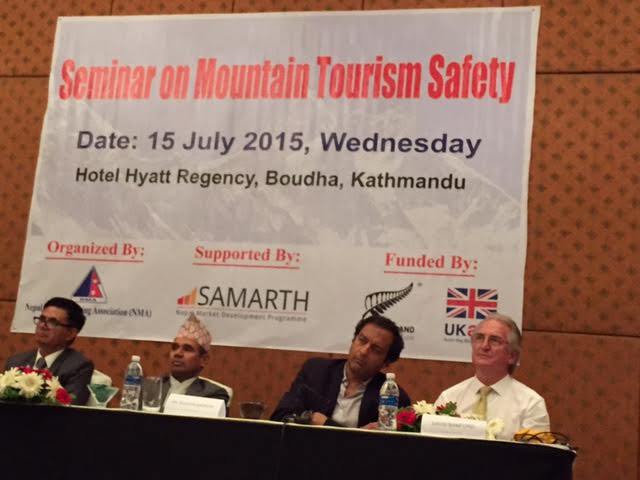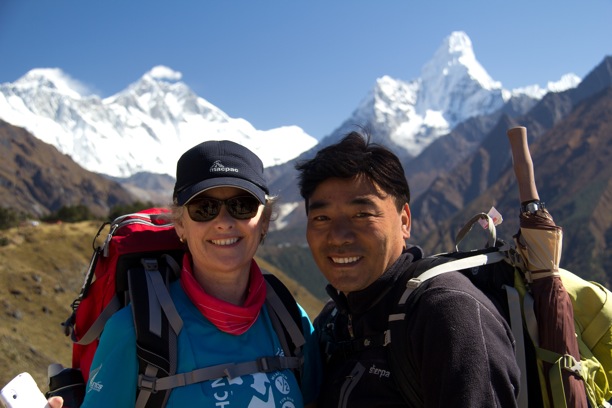
Review of Nepal's Tourism Safety
Nepal’s Mountain Safety Tourism Assessment
My recent assignment to Nepal can be summed up in two parts: safety post Nepal’s recent earthquakes and the underlying mountain tourism safety challenges facing Nepal.
Nepal has had a severe blow to its’ people, infrastructure and many cultural sites in areas around and to the north of Kathmandu. Whilst much of the country has had minimal damage, the effected areas are, brick by brick, ”being built back better”.
Tourism is a key part of the rebuild and, with the exception of the Langtang trekking area which was completely removed by landslides, the main tourism areas and trekking routes are open.
Detailed rapid assessments have been undertaken of key areas including the Everest and Annapurna Treks. Accommodation, bridges and treks have survived well. Those houses/T-houses damaged are being rebuilt although a shortage of cement and reinforcing steel is slowing progress. With international travel advisories being lifted www.safetravel.govt.nz/nepal travel insurance is now reinstated and visitor numbers should grow.
 My mission to assess Nepal’s mountain tourism safety, was supported by the New Zealand and UK governments and included a seminar on mountain tourism safety in Kathmandu. The main findings, based on scores of meetings and a field visit are:
My mission to assess Nepal’s mountain tourism safety, was supported by the New Zealand and UK governments and included a seminar on mountain tourism safety in Kathmandu. The main findings, based on scores of meetings and a field visit are:
- Nepal is good at mountaineering and trekking rescues – the helicopter rescue teams and the mountaineering and trekking groups work very efficiently, and in virtually all cases deliver patients to the main medical clinics effectively. The medical teams, including the Himalayan Rescue Association and the CIWEC Clinic in Kathmandu, provide excellent treatment.
- Nepal has room for improving their rapid responses to major trekking disasters. Over the last 30 years there has been an average of at least one major trekking disaster every decade.
Last year, HudHud Cyclone (http://project-himalaya.com/nepal-info-cyclone-hudhud-storm.html), that dropped two metres of snow on the alpine passes of the Annapurna Circuit and other areas, resulted in 42 deaths and more than 400 rescued.
This incident, along with previous ones (i.e. Manaslu -2012, Gokyo – 1995), highlighted the need for:
- a reliable mountain weather forecasting system;
- competent trek guides who guide in the areas above 4500 metres, e.g. Everest Trek, Annapurna Trek;
- an effective way of sharing mountain safety issues such as altitude sickness and weather and
- rescue leadership and cooperation.
The seminar I attended and presented at strongly supported the need to focus on reducing acicidents for tourists and staff. A focus on mountain weather forecasting, increasing mountain treki staff skills, and sharing information and coordination by all involved was supported. The potential for the industry to improve trekking safety (over 170,000 go trekking each year) is considerable. The key tourism, trekking, rescue and medical services and representatives all attended the seminar and the outcome will hopefully establish some key activities to implement in the next year.
Photo caption & credit
KIWI TREKKERS IN THE KHUMBU 2014 - thanks James Blair for the great photo
http://www.taan.org.np/news/2191-seminar-on-mountain-safety-organized
Posted: Monday 20 July 2015
